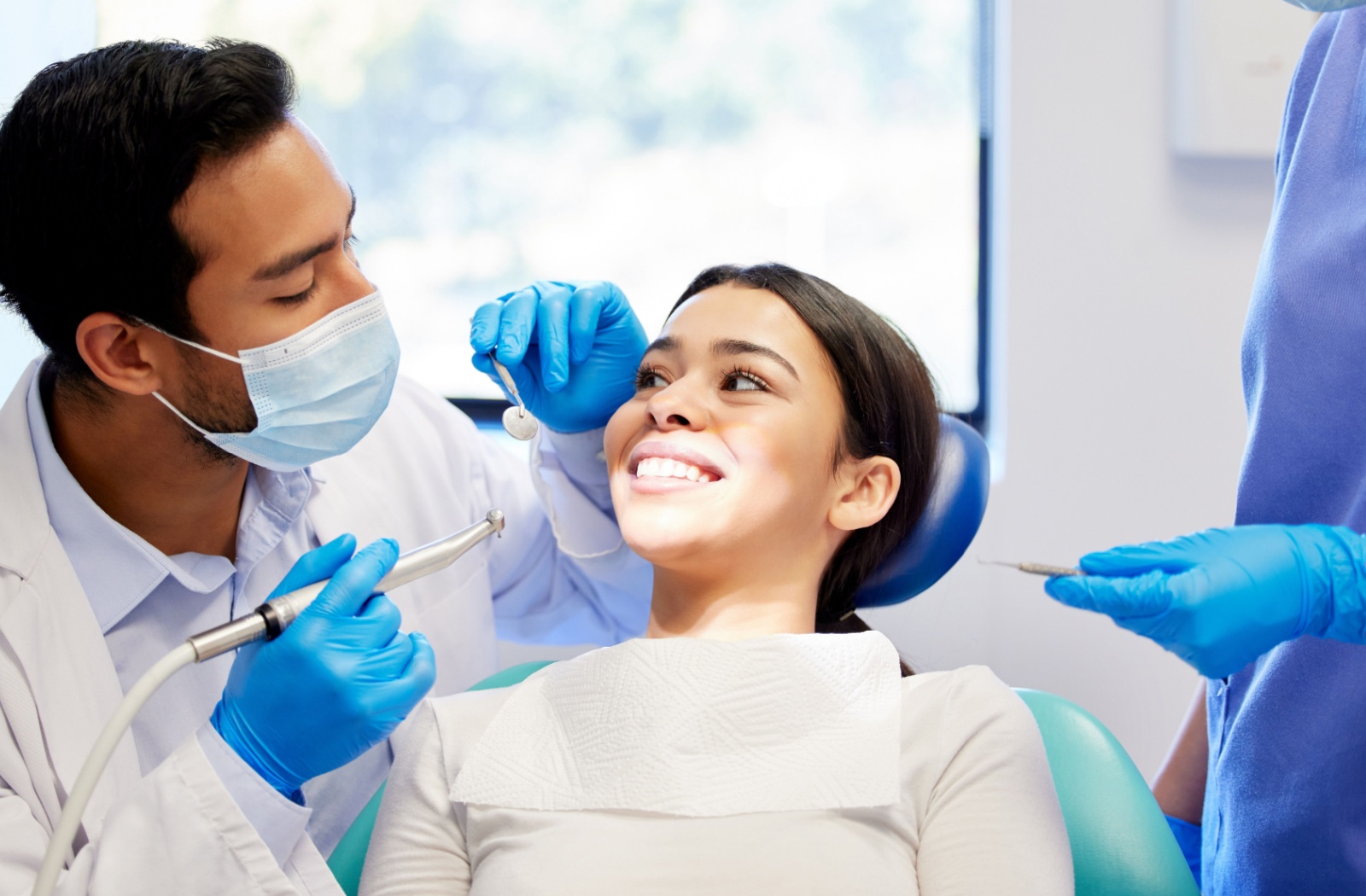Regular cleanings are an important part of keeping your smile healthy, but they don’t have to take up your whole day. Whether you’re juggling a busy schedule or preparing for a first visit, it’s helpful to know how long to expect to be in the chair.
A typical teeth cleaning takes about 30–45 minutes, depending on your age and comfort level.
Dental visits help prevent cavities, build lifelong habits for children, and create positive experiences that make future care easier.
Why Dental Cleanings Are Important
Routine cleanings do far more than just help build bright, sparkling teeth. They come with several other benefits for your oral health:
- Cavity prevention: Plaque and tartar buildup can cause cavities. Professional cleanings remove these harmful substances, reducing the risk of tooth decay.
- Healthy gums: Regular cleanings prevent gum irritation and inflammation, lowering the chances of developing gum disease.
- Early problem detection: Dental professionals can identify potential issues, such as cavities, misaligned teeth, or other concerns, before they escalate.
- Building lifelong habits: Consistent dental visits help children become familiar with the dentist, fostering positive attitudes toward oral health as they grow.
The sooner you begin regular dental checkups, the easier it will be to keep your child’s smile healthy and strong for years to come.
What Happens During a Teeth Cleaning
If it’s yours or your child’s first dental cleaning, you might be curious about what to expect. Here’s a breakdown of a typical teeth-cleaning process:
Initial Examination
Before the cleaning starts, the dental hygienist or dentist conducts a quick visual check-up using a small mirror. This helps identify any visible issues, such as:
- Early signs of cavities or decay
- Gum irritation or swelling
- Developmental concerns with teeth or jaw alignment
This preliminary exam checks that any potential problems are flagged before moving forward.
Plaque & Tartar Removal
Even if you brush and floss regularly, plaque can build up in hard-to-reach places. Over time, this plaque hardens into tartar, which generally requires professional tools to remove. Using a scaler or ultrasonic instrument, the hygienist carefully removes plaque and tartar from your teeth. For kids with good brushing habits, this stage typically goes quickly.
Polishing the Teeth
The next step involves polishing the teeth to remove surface stains and to smooth out rough areas. The hygienist uses a mildly abrasive paste, giving your teeth that polished, fresh-from-the-dentist feel.
Professional Flossing
Even if you’re diligent about flossing your teeth at home, professional flossing during a cleaning helps all remaining debris be cleared away. It’s also an opportunity for the hygienist to assess any areas that may require a bit more attention.
Fluoride Treatment
The typical final step in most cleanings is a fluoride application. This is a quick and simple process where a gel or foam is applied to your teeth. Fluoride helps strengthen the enamel and provides extra protection against cavities until your next visit.
How Frequently Should You Clean Your Teeth?
Most dentists recommend scheduling cleanings every 6 months. This regular schedule helps maintain oral health and allows dentists to catch any issues early. However, certain circumstances might require more frequent visits:
- People prone to cavities may benefit from additional cleanings to stay ahead of dental decay.
- People with braces often need extra attention to prevent plaque buildup around brackets and wires.
Your dentist can provide a personalized schedule based on your specific needs.

Tips for Keeping Your Teeth Clean Between Visits
Good oral hygiene doesn’t stop at the dentist’s office. Helping maintain healthy habits at home is just as important for keeping your smile strong and cavity-free. Here are some simple ways to care for your teeth between professional cleanings:
- Brush twice a day for 2 minutes using a soft-bristled toothbrush and fluoride toothpaste
- Floss daily to remove plaque and food debris between the teeth
- Choose tooth-friendly snacks like cheese, yogurt, apples, and crunchy vegetables
- Limit sugary drinks and treats, especially sticky candies or juice before bedtime
- Drink plenty of water, especially after meals, to help wash away bacteria
- Replace toothbrushes every 3 months or after illness
- Supervise brushing until age 8 to ensure proper technique and coverage
- Use fluoride mouthwash if recommended by your dentist
By making these habits part of your daily routine, you can help support a bright, healthy smile between cleanings.
Book Your Cleaning Today
A teeth cleaning may only take 30–45 minutes, but the results can last a lot longer. At Centennial Smiles, we’re dedicated to providing dental care in a stress-free and welcoming environment.
If it’s time for your next dental cleaning (or your child’s very first appointment), we’d love to help! Contact us today to schedule your visit.



